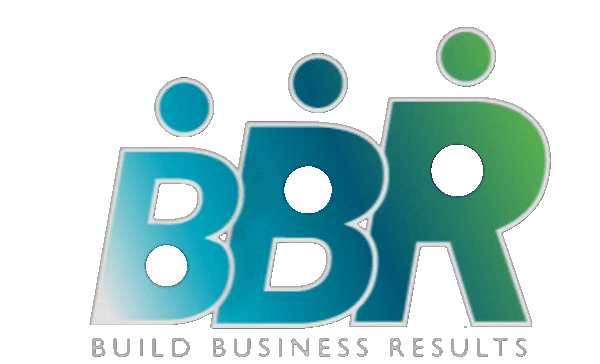Why Content Creators Need to Ditch the Ad Revenue Model

And If you want to get your business or sales funnel launched fast to attract clients consistently, do check out our IGNITE Business Accelerator Program that runs weekly though September and October and Is available Live Online or In Person for DC Area Residents held at the Reston Chamber of Commerce.
See you on the action-field,
Raksha Sukhia, SMB Growth Expert,
Founder BBR Network. #bbrnetwork
I’ve recently watched a mini-documentary about Axel Springer, one of Europe’s biggest print publishers. In post-war Germany, he wanted to create THE newspaper for the masses.
His formula was simply:
- Create cheap and frequent content
- Use sensationalist headlines
- Include big images of famous and sexy people
- Use less text with a simple vocabulary high school dropouts would understand
In a few years, this newspaper called ‘Bild’ (German for ‘view’, ‘sight’) became one of the most popular papers in Europe. Critics call it a populist paper stirring up public emotions to drive sales and ad revenue up. But this ad model worked for decades.
Sounds familiar? Well, it’s almost the same story in our online content creation age.
Digital content companies like Buzzfeed, Huffington Post, and Vice Media have laid off substantial amounts of employees, partly due to declining ad revenue.
Digital content nowadays features clickbaity headlines and evokes strong feelings of anxiety. The goal is to make you tap and share the content to increase the views for the advertisers. No quality content required!
That’s why Buzzfeed and co. often look like classic, sensationalist tabloid papers.
The ad revenue model has also ruined the reader experience.
Consuming content from digital content providers has become a nuisance:
- Odd placements of ads in the middle of your text
- Slideshows where you have to tap each button to see the next image
- Content cut into many pages to inflate view counts
- ‘Notify me’ windows and pop-up menus
It seems the content providers want to make the reading experience as difficult as possible.
These anti-consumer tactics encouraged the use of ad blockers. According to e-marketer, every fourth American uses an ad blocking app. This is equivalent to about 70 million users in the US alone!
Why subscription models are surging
Spotify, Netflix, or your favorite software-as-a-service thrive on subscriptions. They slowly but surely replace the classical ad model.
Below are the main advantages over the interruptive ad economy.
Permission-based marketing
Intrusive ads disrupt the consumer experience. Subscriptions are 100% voluntarily and don’t interrupt your experience.
The content producer asks the customer for a monthly fee in exchange for ongoing special access. The forever quotable Seth Godin said it best: ”Permission marketing is the privilege (not the right) of delivering anticipated, personal and relevant messages to people who actually want to get them.”
I loathe ads even on websites I love to read. However, I happily support content creators on Patreon and Gumroad with my money. The former model interrupts me, the latter asks me for permission.
Which leads us to the next point.
Consumer-friendly
Ad models focus on advertising companies. Subscription models focus on consumers.
In legacy TV, shows are not created for the consumers but to attract ad money. That’s why they’re spammed with mini-cliffhangers and artificially bloated. They often run up to 22 episodes per season. Their only goal is to keep the audience hooked long enough to air as many pricey commercials as possible. After all, company ads pay for these shows, NOT the audience.
Subscription services operate the opposite way.
Streaming services like Netflix or Amazon Prime produce shorter shows with an average of 10 episodes per seasons. They also ditch mini-cliffhangers. Why? The producers need to make each episode as engaging as possible. The audience pays for the shows, not companies.
Guess which model is more consumer-friendly?
Higher quality of content
When milking views for ad money isn’t an issue, you can ditch fast food content. The predictable income from monthly subscriptions allows you to experiment with different styles. You can try out long-form written content, video, audio or a mix and see what your audience prefers. By subscribing, they already gave you permission to go ahead.
It’s not just the big companies using the subscription models. Artists, online shows, and individual content creators use subscription services like Patreon or Gumroad to sponsor their output.
In a world with declining customer loyalty, the subscription model supports our natural lethargy. Once subscribed, you’re supporting the content creator on an ongoing basis without any additional hassle on your side.
Source: Mars Dorian, Businessesgrow
Related Article
What’s a Good Landing Page Conversion Rate?
Business Agility Is the New Norm. Do You Have What It Takes?
Tags
#BBR Network, #Profitability, #Small Business Administration, #Small Business Growth, #Small Business Marketing and Sales, #Small Business Owners, #SMB, #SME, as revenue, Build Business Results, Businessesgrow, Buzzfeed, Content Creators, Content Marketing, Huffington Post, Marketing, Raksha Sukhia, Spotify










